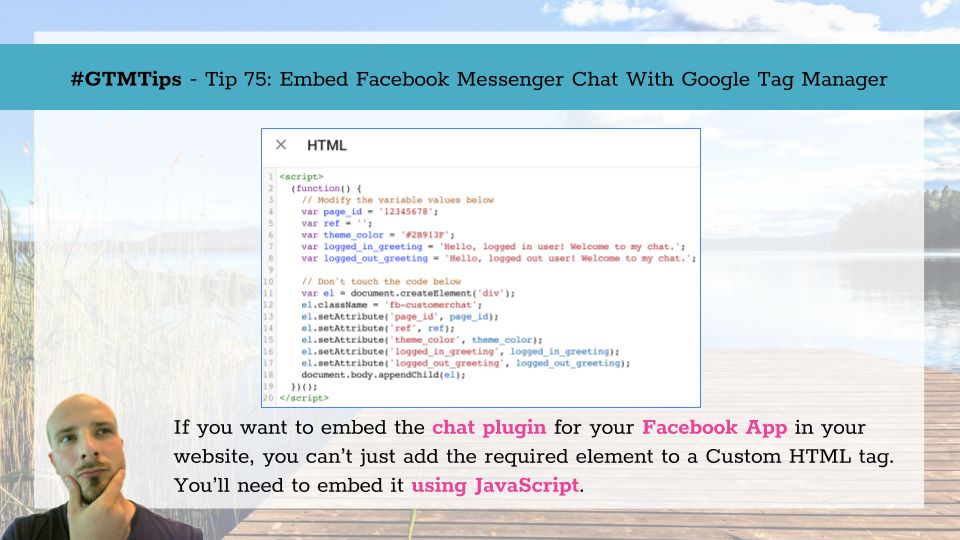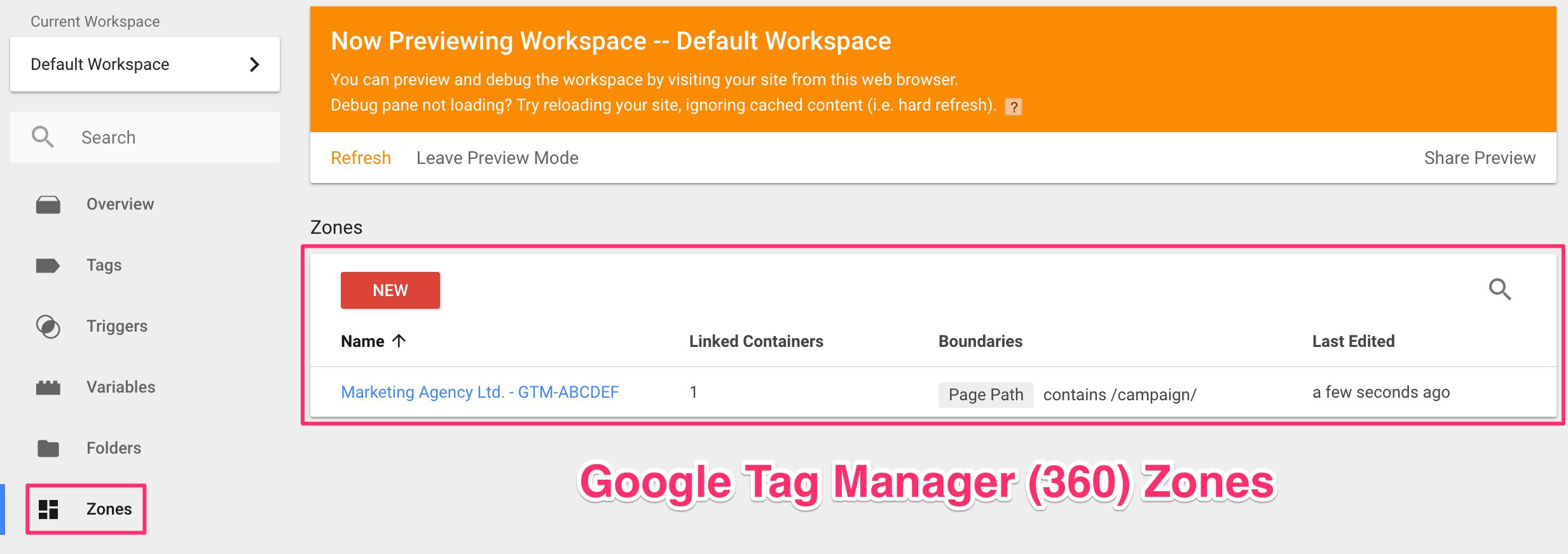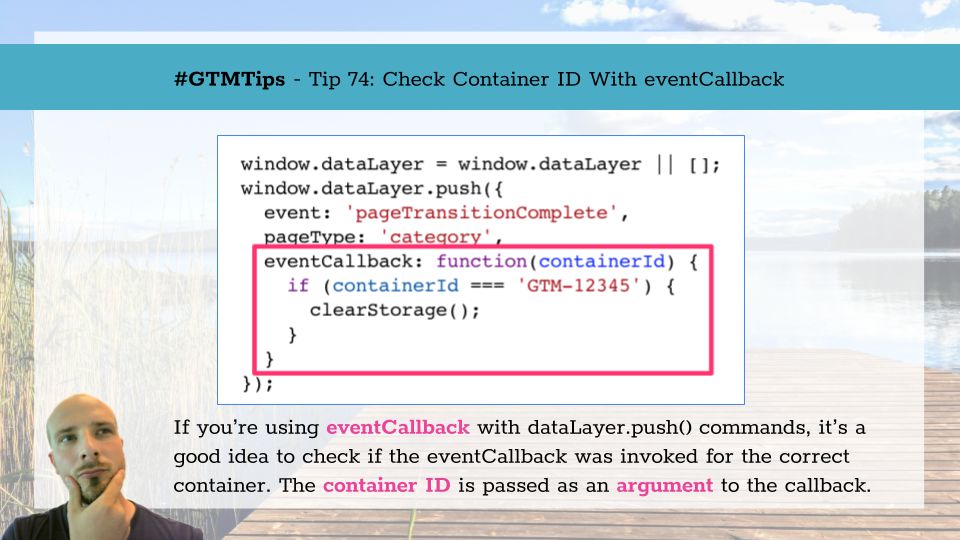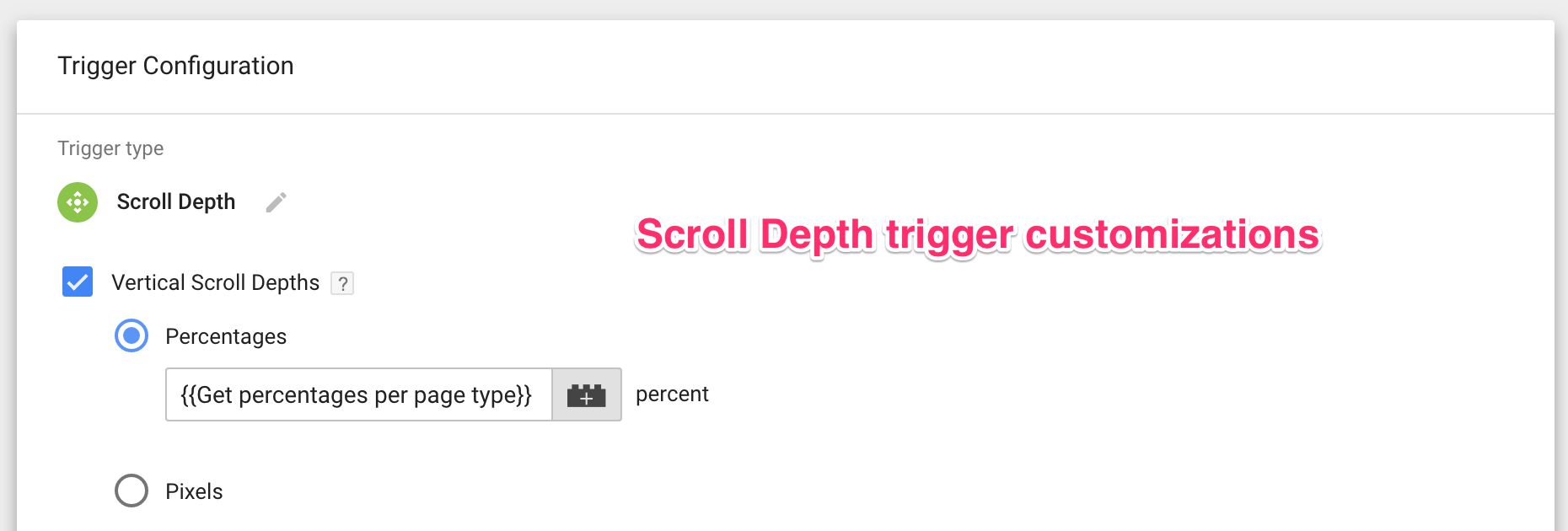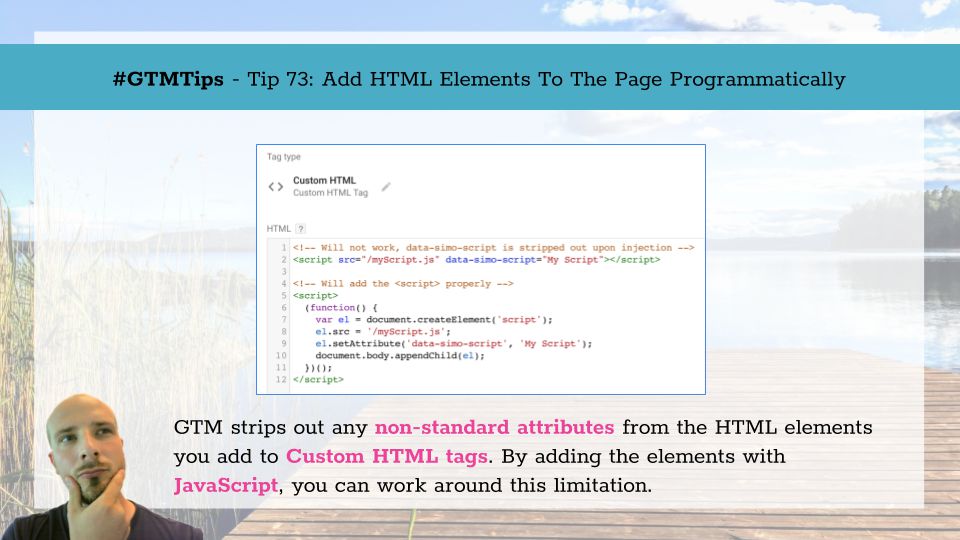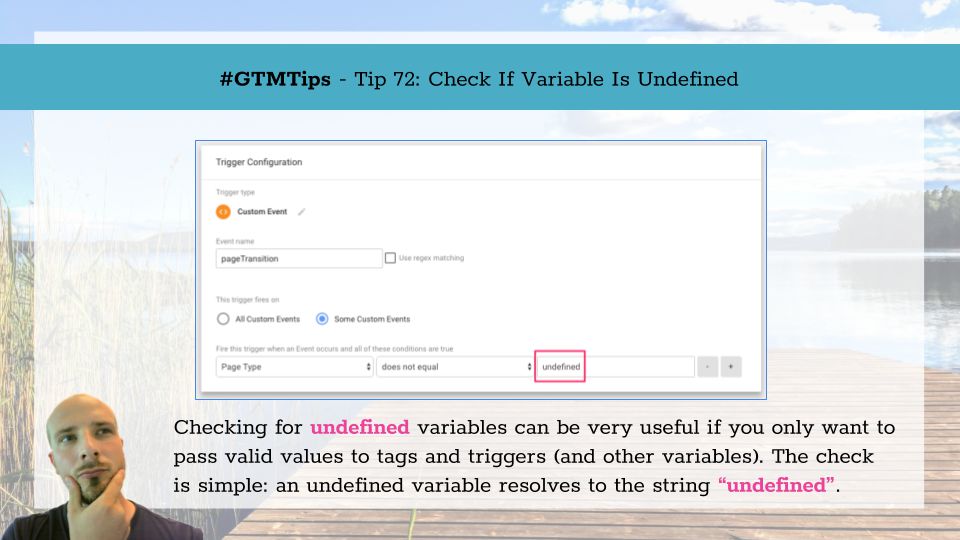A while ago, I published a #GTMTips article, where I showed how you can add HTML elements to the page programmatically using Google Tag Manager. This is relevant because GTM’s validators prevent you from adding custom parameters to HTML elements that are injected directly via the Custom HTML tag. To circumvent this validation, you need to create the element programmatically, before appending it to the document.
A while ago, Matteo Gamba asked me a question related to the Facebook Customer Chat Plugin.
